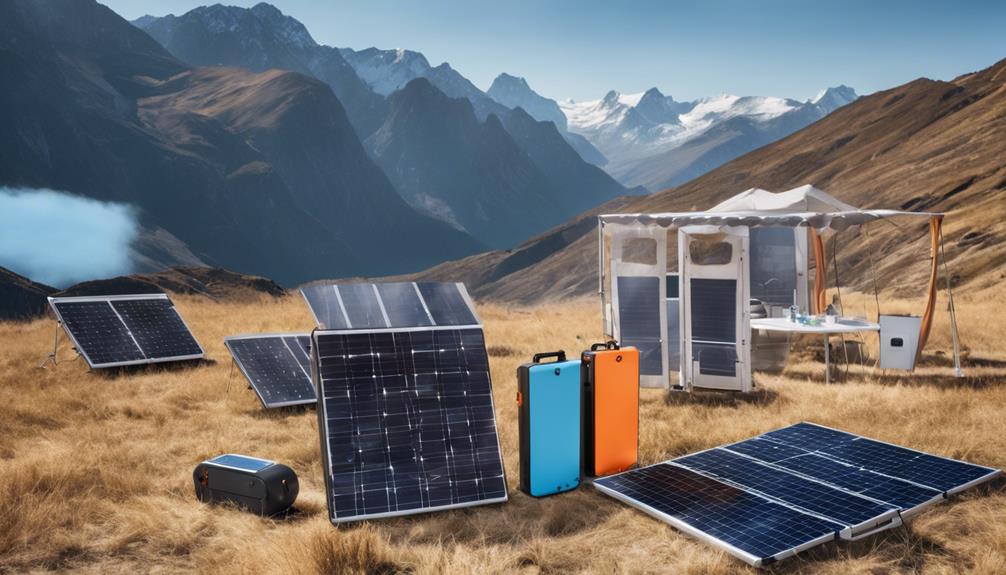
In an era where sustainability and energy efficiency are paramount, many RV enthusiasts are turning to renewable energy solutions to power their adventures. Among the most popular options is the RV solar panel kit with battery and inverter. This comprehensive guide will explore everything you need to know about these kits, including their components, benefits, installation, and maintenance.
Understanding RV Solar Panel Kits
An RV solar panel kit with battery and inverter is designed to harness solar energy and convert it into usable electricity for your recreational vehicle. These kits typically consist of solar panels, a charge controller, a battery for energy storage, and an inverter to convert the stored DC power into AC power for household appliances. By utilizing solar energy, RV owners can enjoy the freedom of off-grid living while significantly reducing their carbon footprint.
Benefits of Using an RV Solar Panel Kit
Investing in an RV solar panel kit with battery and inverter offers numerous advantages. Firstly, it allows for greater independence from traditional power sources, enabling you to camp in remote locations without worrying about running out of electricity. Secondly, these systems can lead to significant cost savings in the long run, as they reduce reliance on fuel-powered generators and campground hookups. Lastly, solar power systems are eco-friendly, helping to protect the environment by reducing greenhouse gas emissions.
Components of an RV Solar Panel Kit
A complete RV solar panel kit with battery and inverter includes several essential components. The most visible part is the solar panels, which capture sunlight and convert it into electricity. The charge controller regulates the voltage and current coming from the panels to prevent overcharging the battery. The battery stores the energy for later use, ensuring you have power even when the sun isn’t shining. Finally, the inverter is crucial for converting the stored DC power into AC power, making it suitable for running typical household devices and appliances.
How to Choose the Right RV Solar Panel Kit
When selecting an RV solar panel kit with battery and inverter, consider several factors. Firstly, evaluate your energy needs by calculating the total wattage of all devices you plan to use. This will help you determine the number of solar panels and the capacity of the battery you require. Additionally, consider the quality of the components; investing in reputable brands can ensure longevity and efficiency. Lastly, check for compatibility with your RV’s electrical system to avoid complications during installation.
Installation Process for RV Solar Panel Kits
Installing an RV solar panel kit with battery and inverter can be a straightforward process, especially with the right tools and guidance. Begin by selecting a suitable location on your RV’s roof for the solar panels, ensuring it receives maximum sunlight exposure. Use a mounting system to securely attach the panels. Next, wire the solar panels to the charge controller, followed by connecting the charge controller to the battery. Finally, hook up the inverter to the battery and connect your devices. Always refer to the manufacturer’s instructions and consider consulting a professional if you’re unsure about any steps.
Maintenance Tips for RV Solar Panel Kits
To ensure the longevity and efficiency of your RV solar panel kit with battery and inverter, regular maintenance is essential. Start by cleaning the solar panels periodically to remove dust, dirt, and debris, which can hinder their performance. Inspect the wiring and connections for any signs of wear or corrosion. Additionally, monitor the battery’s charge levels and perform regular checks to ensure it’s functioning correctly. Consider investing in a battery management system to optimize performance and prolong battery life.
Common Myths About RV Solar Power
Despite the growing popularity of RV solar panel kits with battery and inverter, several myths persist that may deter potential users. One common misconception is that solar power is only effective in sunny climates. In reality, solar panels can generate electricity even on cloudy days. Another myth is that solar power systems are too expensive. While the initial investment can be significant, the long-term savings and environmental benefits often outweigh the costs. Educating yourself on these myths can help you make an informed decision about transitioning to solar energy for your RV.
Conclusion: Embrace the Freedom of Solar Power in Your RV
Transitioning to an RV solar panel kit with battery and inverter is a practical and eco-friendly option for those seeking greater freedom on the road. With a variety of kits available to suit different needs, the benefits of solar energy—from independence and cost savings to environmental impact—are undeniable. By understanding the components, installation process, and maintenance requirements, you can confidently embark on your solar-powered adventures. Embrace the freedom of solar energy and enjoy the great outdoors without compromising on comfort and convenience.
In summary, whether you’re a seasoned RVer or a newcomer, investing in a solar panel kit can enhance your travel experience while contributing positively to the environment. Take the plunge into renewable energy and make your next camping trip truly unforgettable!





